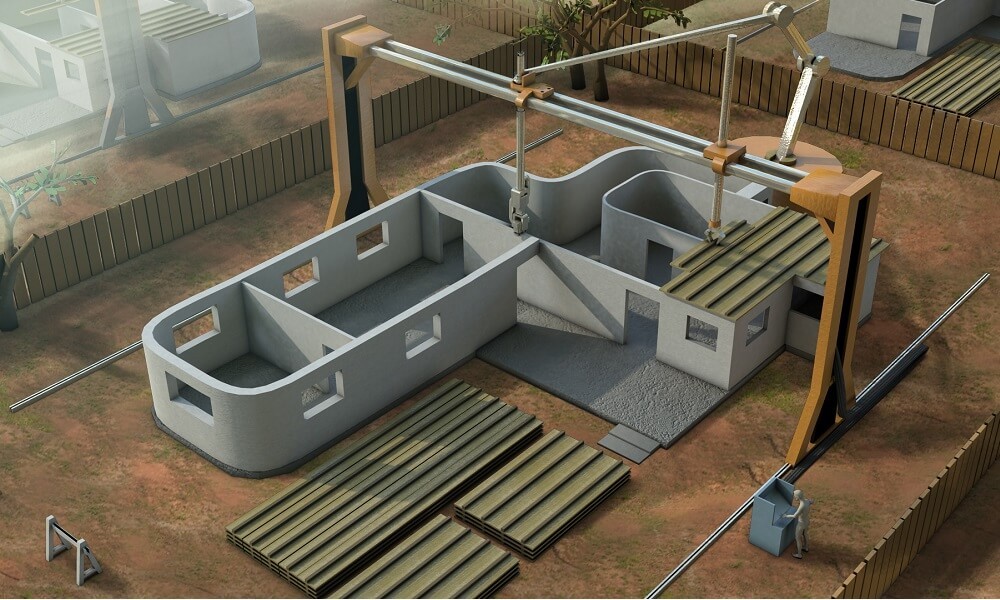In recent years, 3D printing technology has emerged as a game-changer in various industries, and the field of construction and architecture is no exception. The ability to create complex and customized structures with unparalleled precision has opened up new possibilities and transformed traditional construction methods.
Enhancing Design Freedom and Customization:
One of the most significant advantages of 3D printing in construction and architecture is the unprecedented level of design freedom it offers. Traditional construction methods often have limitations when it comes to creating complex geometries and intricate designs. However, with 3D printing, architects and designers can unleash their creativity without compromising on structural integrity.

Through the use of Computer-Aided Design (CAD) software, intricate digital models can be transformed into physical structures layer by layer. This process allows for the creation of highly customized designs, tailored to specific project requirements. Whether it’s organic shapes, intricate façades, or unique interior elements, 3D printing enables architects to push the boundaries of conventional design.
Streamlining Construction Processes:
3D printing in construction has the potential to revolutionize the way buildings are constructed. Traditional construction methods are often time-consuming and labor-intensive, requiring a significant number of workers and extensive resources. In contrast, 3D printing presents a more streamlined and efficient alternative.
By automating the construction process, 3D printing significantly reduces labor requirements. Large-scale 3D printers can create structures with minimal human intervention, cutting down on construction time and costs. Additionally, the use of robotic arms and advanced machinery ensures greater precision and eliminates human errors.
Sustainability and Waste Reduction:
Sustainability has become a pressing concern in the construction industry, and 3D printing offers a promising solution. Traditional construction methods generate a substantial amount of waste through excess materials, which contributes to environmental degradation. In contrast, 3D printing minimizes material wastage.
With 3D printing, materials can be used more efficiently as they are deposited layer by layer precisely where they are needed. This reduces the overall material consumption, resulting in significant cost savings and a smaller environmental footprint. Furthermore, sustainable and recyclable materials, such as bioplastics or recycled construction waste, can be utilized in the 3D printing process, further enhancing its eco-friendly potential.
Overcoming Challenges and Looking Ahead:
While 3D printing in construction and architecture shows immense promise, it also faces challenges that need to be addressed. Scaling up the technology for large-scale projects, ensuring structural stability and durability, and navigating regulatory frameworks are among the key hurdles.
However, researchers, architects, and engineers are actively working to overcome these challenges. The construction industry is witnessing rapid advancements in 3D printing technology, including the development of new materials, improved printing techniques, and the integration of robotics and automation.
3D printing has the potential to revolutionize the construction and architecture sectors, offering enhanced design freedom, streamlined construction processes, and sustainable solutions. As the technology continues to evolve, we can anticipate even greater integration of 3D printing in large-scale construction projects, enabling the creation of complex and sustainable structures that were previously unimaginable.
At Dot School of Design, we recognize the transformative power of 3D printing in the realm of construction and architecture. Through our comprehensive curriculum, we prepare our students to embrace cutting-edge technologies and leverage them to shape the future of design. With the possibilities that 3D printing offers, the boundaries of creativity in architecture and construction are being pushed, and a new era of design is on the horizon.
For more blogs related to design: https://www.dotsod.in/blog/
Follow DOT School of Design in Facebook, Instagram, LinkedIn and YouTube

